Article by Kevin Chetty: Director Europe, Middle East and Africa. Terwilliger Center for Innovation in Shelter. Habitat for Humanity International.
Uganda has a housing shortage of about 2.4 million Houses.”
Encouraging signs are emerging that the free market can be part of a housing solution for low-income communities.
East Africa, like the rest of the continent, is in the grip of rapid urbanisation. Populations are growing and the numbers moving into cities are rising even faster. As a consequence, the amount of inadequate housing is increasing significantly. Poor housing affects every aspect of life. It is bad for health. It limits people’s ability to earn a living and their children’s capacity to learn. Housing low income households is a momentous challenge for everyone, whether in government, finance or the non-profit sector.
According to the Ministry of Land, Housing and Urban Development, Uganda has a housing deficit of about 2. 4 million units. Other studies put Kenya’s shortfall to about 2 million. How will this gap be filled? The provision of public housing is virtually non-existent and the mortgage market simply doesn’t work for the vast majority.
Most families are simply not viewed as reliable prospects by the banks. Even if they were, they might find it difficult to produce the required title deeds for a property. Strict building codes and requirements make even the cheapest houses purchasable with mortgages difficult for low-income borrowers to access. However, according to new study findings, Habitat for Humanity believes the answer or solution to this is to take existing microfinance methods and apply them to housing.
An initiative undertaken in Kenya and Uganda by Habitat’s Terwilliger Center for Innovation in Shelter and the Mastercard Foundation, has shown that families or individuals earning as little as $50 per month can successfully borrow money to build, extend or renovate their home. Ordinarily, they would be excluded from banking and financial services. The Building Assets Unlocking Access project, however, opens the door, by offering incremental loans for incremental improvements. Unable to borrow a large amount up front, a family can, for example, borrow Shs5 million over 18 months to lay the foundations of a home. Once that is paid off, they might borrow a similar amount to complete the walls. Within two to three years, they would have moved from a shack or cramped single room to a properly constructed house.
In Uganda housing loans are now available at banks such as Centenary Bank, Opportunity Bank, and Pride Microfinance, among others. It is all about being small scale, affordable and lending responsibly, and it is working. The six local financial institutions that participated in the project report that their housing microfinance portfolios are often performing better than their general loan portfolios. In other words, they are making money.
Indeed, there is a business case for housing microfinance. Since 2015, about six institutions in Uganda and Kenya have lent $33 million to more than 42,000 households, benefitting 210,000 individuals. Among them is Jane, a single mother of three, in Kenya. Forced to leave her father’s compound when he remarried, she began renting rooms at a crowded shopping area in Machakos, 40 miles from Nairobi.
As businesswoman, she operated a school canteen and sold seeds, but was desperate for her own place. She applied for a KShs200,000 (about UShs7 million) from the Kenya Women Microfinance Bank Ltd, to start building her own home. The house was ready to occupy by May 2016, though not completely finished. She plans to continue developing her business so that she can repay the loan. Jane says the biggest benefit of her home is that she now feels like a “strong woman”.
More than 35,000 clients have taken up the Nyumba Smart loan from the same bank in the last two years. In the past decade, just 23,000 have taken out conventional mortgages with the bank. Jane’s story is similar to that of thousands of other women and men, who are accessing housing loans in Uganda and are able to finance them using their low incomes.
For the banks providing these services, the leverage has been great. The project’s success gives us real conviction that it can be replicated elsewhere, with self-financing versions taking over before too long. We continue to encourage all stakeholders, particularly microfinance institutions, to embrace the concept of housing microfinance.
